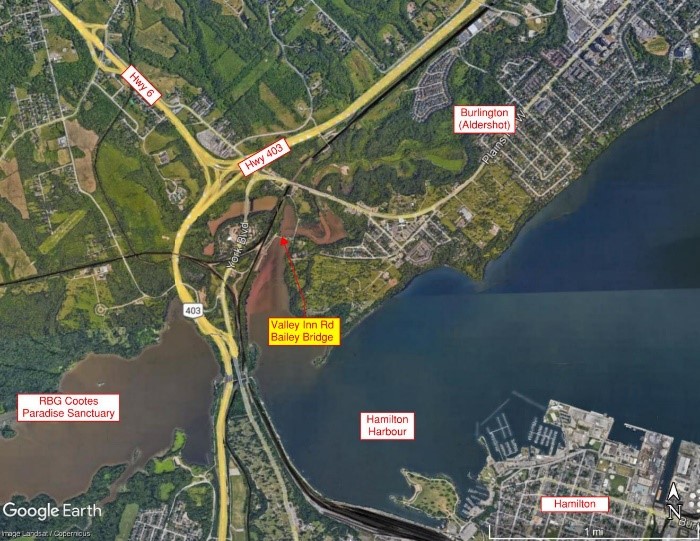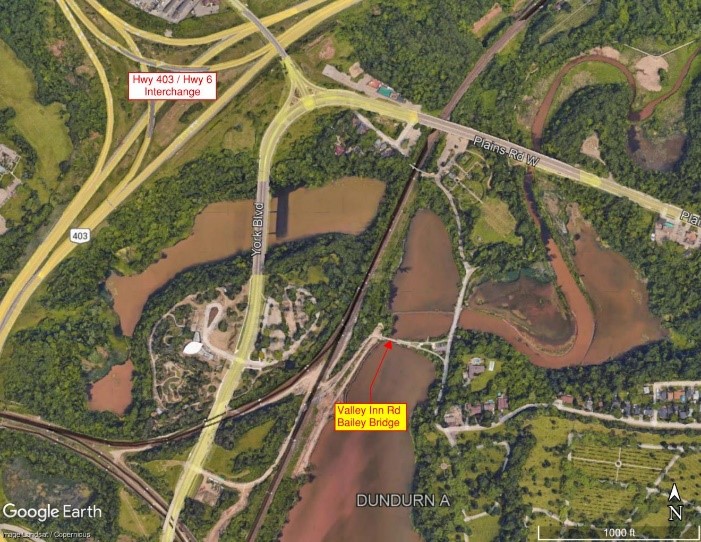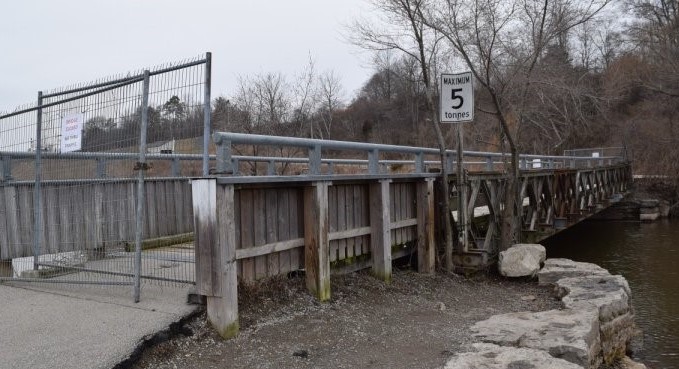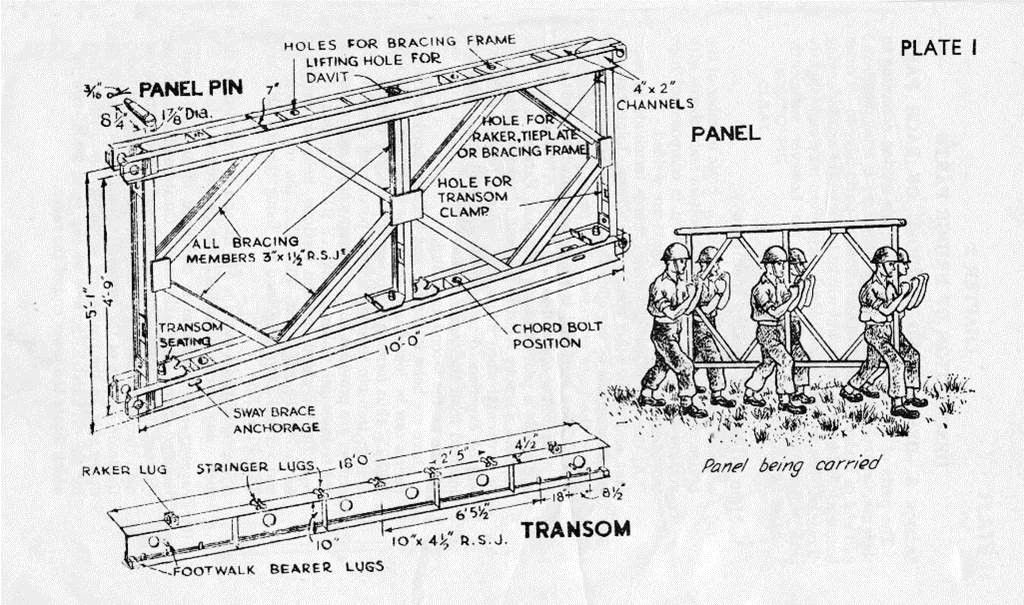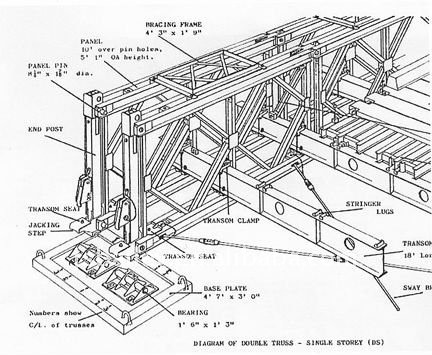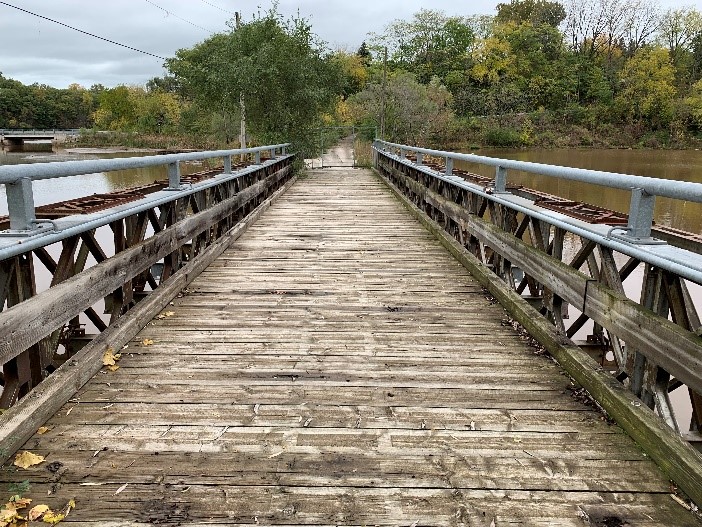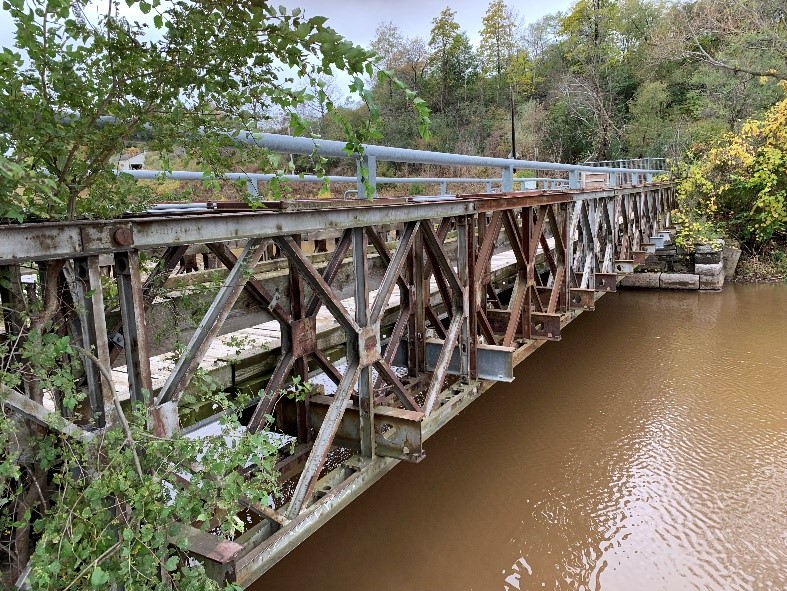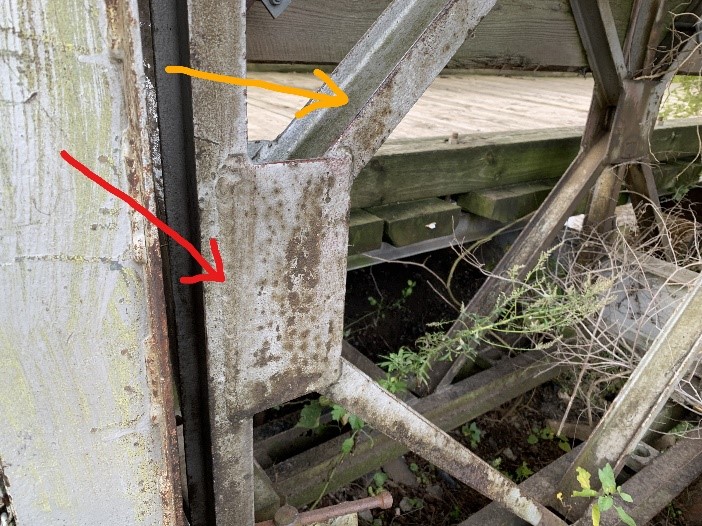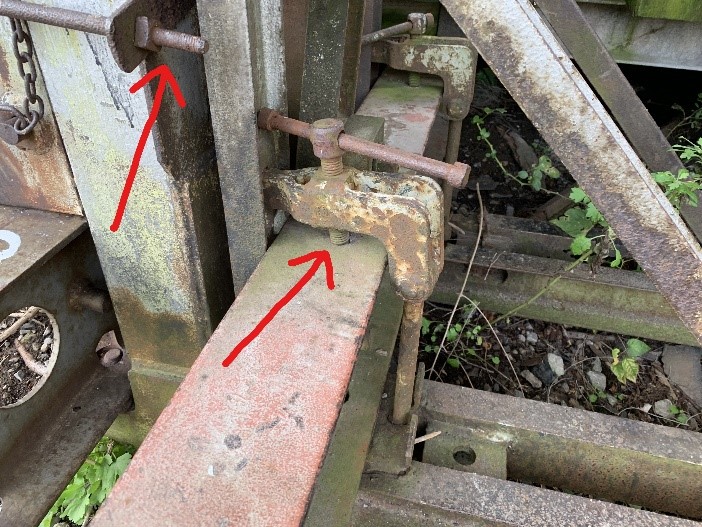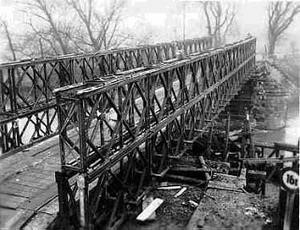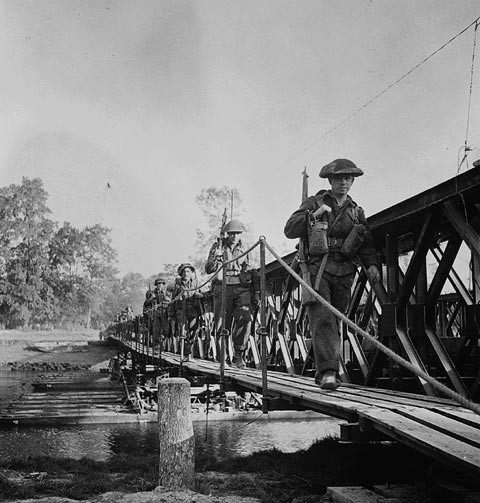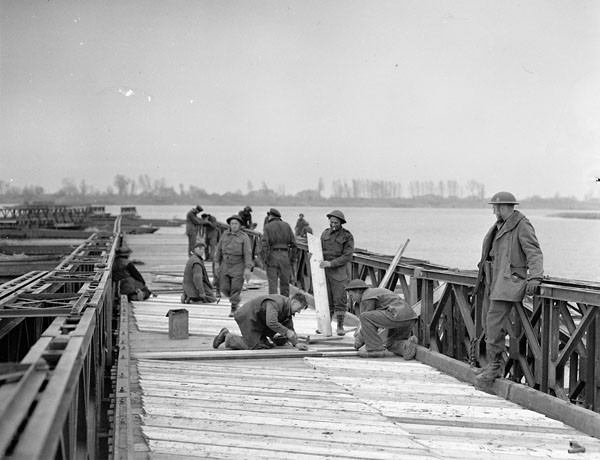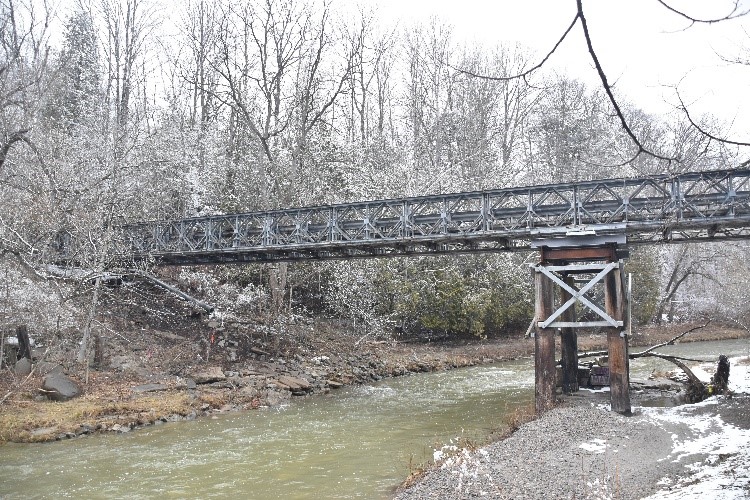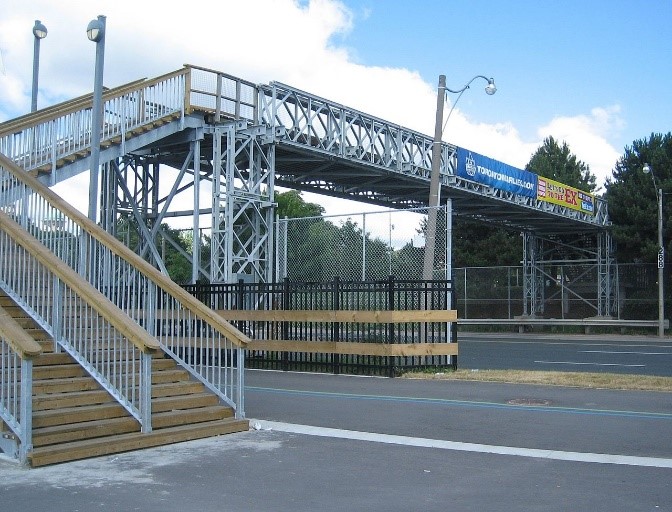Where the Grindstone Creek connects to Hamilton Harbour lies the small Valley Inn Road Bailey bridge. Before it was closed to vehicular traffic in 2006 and to pedestrians in 2009, this bridge connected Burlington to York Blvd. in Hamilton, across Carroll’s Bay Marsh (see Figure 1), right at the border between the two cities. The original bridge was a single-span timber bridge damaged beyond repair by a transport truck in 1964. The Bailey bridge was installed the same year by the Canadian Military Engineers (see Figure 2; the Canadian Military Engineers emblem is shown in Figure 9). This bridge is essentially military equipment.
Many don’t know that the Bailey bridge was designed for military use during World War II and is a world-renowned war veteran! And like most veterans, you can’t see its battle scars just by looking at it.
The Bailey bridge was a portable prefabricated truss bridge designed by the British military in 1941 for use during the war. Its secret was its simplicity, flexibility, durability, and the speed at which it can be built BY HAND without the use of heavy equipment! It is made up of three main components repeated throughout each section of the bridge (simplicity!) and can be reconfigured depending on the length and capacity needed — these bridges could carry tanks. They could be built in the morning, carry the troops and tanks across during the day, and be dismantled at night, ready for its next mission (see Figure 3).
The Valley Inn Road Bailey bridge was assembled by military engineers in 1964, launched on rollers from one side of the gap to the other, then jacked down onto its foundation plates. Intended for temporary use, it was eventually bought by the city and remained open for 45 years (see Figure 4).
The Bailey bridge was fabricated with welded steel components, shaped I-beams, and threaded bolts for ease of assembly and dismantling (as opposed to rivets), since quick deployment was instrumental to its mission. This was all very much new technology at the time and wouldn’t be incorporated into mainstream bridge construction worldwide until several decades later (see Figure 5).
This was truly an engineering marvel at the time, providing efficient troop mobility on the battlefield and contributing significantly to the successful outcome of the war (see Figures 6 and 7).
This bridge was so innovative and effective that its use continued long after the war in mostly civilian contexts. Bailey bridges can be found all over North America, Europe, and around the world, still in use today for temporary AND permanent uses. In fact, the very first Bailey bridge prototype installed in 1941 in England is still in service today in its original location.
Two examples of this in Toronto include the Finch Ave. Bailey bridge, built in 1954 over the Rouge River (in 3 days), replacing a bridge destroyed by flooding, and the Lakeshore Blvd. pedestrian Bailey bridge built in 1952, connecting Exhibition Place to the waterfront, spanning over Lakeshore Blvd.; both were built by military engineers (see Figure 8).
This bridge design was the closest thing to a one-size-fits-all bridge that has ever existed and is the only bridge in history that can claim widespread use all over the world, on every continent, including the Arctic and Antarctic, to this day. And we have one right next to us in Hamilton!
Earlier in 2021, it was decided by the City of Hamilton and the City of Burlington that this bridge be replaced with a newer pedestrian bridge to open the pathway to public access again. This will mark the honourable retirement of a war hero, to be returned to the Canadian Military Engineers. Visit this marvelous bridge before it goes.
Trivia
The first Bailey bridge built in war time under enemy fire was by the Canadian 3rd Field Engineering Regiment (of which I was a member in the 1990s!) in Sicily, Italy.
Have you seen an interesting building or piece of infrastructure in or around Burlington that you’d like Eric Chiasson, your personal engineer, to write about?
Send us your suggestions, comments, or questions to articles@local-news.ca and we’ll see what Eric can find out!
Sources:
Canadiansoldiers.com. Bailey Bridge. Url: https://www.canadiansoldiers.com/equipment/engineerequipment/baileybridge.htm (accessed Nov. 1, 2021).
Craven, R. June 5, 2021. New Bridge Coming to Valley Inn. Burlington Local-News.ca. Url: https://local-news.ca/2021/06/05/new-bridge-coming-to-valley-inn/ (accessed Nov. 1, 2021).
Forsyth, B. 2020. The Old Finch Avenue Bailey Bridge — A Historic Temporary Bridge Still in Use 66 Years Later. Canadian Military History website. Url: www.militarybruce.com/the-old-finch-avenue-bailey-bridge-a-historic-temporary-bridge-still-in-use-66-years-later/ (accessed Nov. 1, 2021).
Forsyth, B. 2020. Valley Inn — A Popular Spot for Nature Lovers Once Had Its Own Popular Hotel. Canadian Military History website. Url: https://militarybruce.com/valley-inn-a-popular-spot-for-nature-lovers-once-had-its-own-popular-hotel/ (accessed Nov. 1, 2021).
Marshall, A. 2020. What is a Bailey Bridge? Boot Camp & Military Fitness Institute website. Url: https://bootcampmilitaryfitnessinstitute.com/2020/10/05/what-is-a-bailey-bridge/ (accessed Nov. 1, 2021).
The Hamilton Spectator. Feb. 10, 2020. Should Hamilton Save the Valley Inn Road Bridge — The Only Route to Heartbreak Hill? Url: https://www.thespec.com/news/hamilton-region/2020/02/10/should-hamilton-save-the-valley-inn-road-bridge-the-only-route-to-heartbreak-hill.html (accessed Nov. 1, 2021).
Van Dongen, M. Sept. 10, 2020. Heartbreak Averted? McNally Foundation Offers $1 Million to Save Valley Inn Road Bridge From Collapse. The Hamilton Spectator. Url: https://www.thespec.com/news/hamilton-region/2020/09/10/heartbreak-averted-mcnally-foundation-offers-1-million-to-save-valley-inn-road-bridge-from-collapse.html (accessed Nov. 1, 2021).
For more information:
The 1977 film A Bridge Too Far showcases the construction of a Bailey bridge in a military context.
For more information about Eric Chiasson, Your Personal Engineer: https://www.linkedin.com/in/eric-chiasson-10601082


